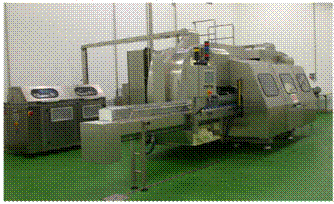Novel approaches in product formulation
New technologies are always being developed that aim to solve the main difficulties faced by the meat industry in attempting to reduce salt content in meat processed products. To end this section, here are some examples of novel approaches and the results found.
High-pressure technology
High pressure processing (HPP) has been tried under experimental conditions in manufacturing restructured dry-cured hams, frankfurters, breakfast sausages and restructured pork. The results vary between products and there have been differences in the pressure used, which makes comparisons difficult. The following are three examples.
- Dry-cured hams
Using a 600-MPa (megapascal) HPP has been found to increase the microbiological stability (improving shelf-life) and the perception of saltiness of sliced hams with reduced salt content. HPP has also had a positive effect on muscle binding. However, HPP increased hardness and decreased elasticity. It also had a negative effect on the appearance of slices, increasing brightness and iridescence (which people might falsely associate with bacteria growth and spoiled meat) and reducing colour homogeneity (Arnau, J et al., 2009).
- Breakfast sausages and frankfurters
Using a 150-MPa HPP, cooking loss was reduced significantly and this allowed salt content to be reduced from 2.5% to 1.5%. Hardness, springiness, gumminess and chewiness were reported to be unaffected by the pressure. In addition, the use of pressure did not affect overall acceptability (Troy et al., 2001).
- Restructured pork
200-MPa HPP has been used successfully in producing restructured pork meat in combination with additives (glucono-δ-lactone and κ-carrageenan) (Hong et al., 2008). Similarly, HHP has been used experimentally at lower MPa (from 0.1 to 200 MPa) and with non-meat proteins as binders (i.e. soy, sodium caseinate, whey protein and egg white powder). HPP has improved water-binding capacity and binding strength (Hong et al., 2006).
Figure 4.3 High pressure equipment (Source: Arnau et al., 2009)
